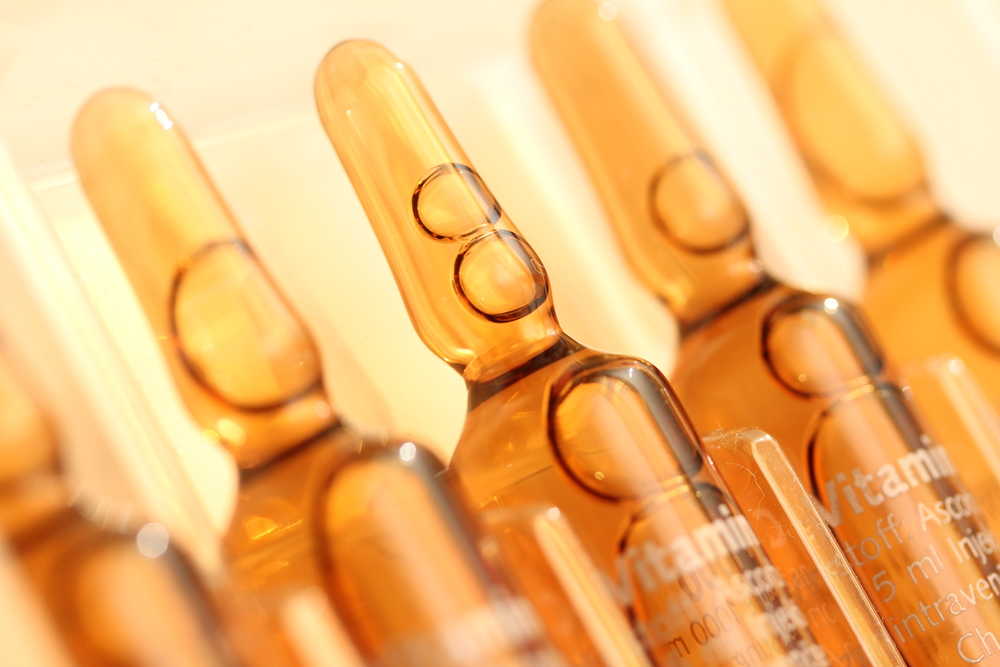Vitamin C & Thiamine: A cocktail that saves lives in sepsis?

EJRC ARTICLE REVIEW
Improving sepsis management is currently one of the major challenges of intensive care medicine (1). Various therapies aimed at improving the outcome of patients suffering from sepsis have been proposed and tested. Although some remain promising, the majority of these proposed therapies have failed to show significant results in RCT trials (2).
Dr. Marik and colleagues have recently published results of a novel, adjunctive approach to sepsis therapy (3). They conducted a retrospective, single-center before-after clinical study comparing standard sepsis therapy to standard sepsis therapy plus hydrocortisone, vitamin C, and thiamine supplementation. According to the unit’s standard sepsis therapy, patients with sepsis received broad spectrum antibiotics, conservative fluid management, lung protective ventilation, and hydrocortisone therapy, among other measures.
Forty-seven consecutive patients with the primary diagnosis of severe sepsis or septic shock, according to the 1991 (SIRS-) criteria (4), and a procalcitonin level of 2 ng/ml or higher, were paired with forty-seven propensity score-matched control patients from seven months earlier. The intervention consisted of intravenous vitamin C (1.5 g every 6 h), thiamine (200 mg every 12 h), and hydrocortisone (50 mg every 6 h) within 24 hours of ICU admission.
The authors found a significant reduction in hospital mortality from 40.4% in the control group to an astonishing 8.5% in the study group (primary endpoint), as well as a reduction in duration of vasopressor use (54.9 vs 18.3 hours), relative risk for acute kidney injury (33% vs 10%), decrease in SOFA score 72 hours post-ICU admission (0.9 vs 4.8) and increase in procalcitonin clearance 72 hours post-ICU admission (33.9% vs 86.4%).
The authors reported that none of the patients in the study group died of sepsis-related complications in the ICU. All four mortalities were related to complications of the underlying illness and occurred post-ICU discharge on the general wards.
A major weakness is the retrospective nature of the study, as well as the lack of concurrent controls. Further limitations include the sample size, and the fact that 60% of the control group patients also received hydrocortisone. In spite of these factors, however, the differences in outcome between the two treatment groups is still remarkable.
So far, no large-scale trials could demonstrate any relevant clinical benefits of vitamin C supplementation in sepsis patients. The use of hydrocortisone alone has shown no consistent benefit for patients with sepsis. The recently published and highly recognized RCT “HYPRESS” (5), for example, could find no outcome benefit of adding low-dose hydrocortisone to sepsis management. Marik et al. propose a synergistic effect of the three study drugs, whereas each individual drug in isolation was insufficient to significantly affect patient outcomes.
A general scientific rationale for the approach is given. In a thorough and well-balanced accompanying editorial, Dr. Oudemans-van Straaten explained that vitamin C might prevent collateral damage caused by neutrophil-derived reactive oxygen species. Furthermore, vitamin C is known to prevent the depletion of e.g. vitamin E and glutathione. Assuming that the results of the study are reproducible and the effects robust, Oudemans-van Straaten and co-workers propose that the early intravenous supplementation of high-dose Vitamin C might be a critical factor (6).
The results of this highly interesting study have been discussed at conferences and in scientific forums during the past months, and some physicians might have been tempted to add the protocol to standard care. However, despite all criticism, Dr. Oudemans-van Straaten titled his editorial “How to give Vitamin C a Cautious but Fair Chance in Severe Sepsis”. Indeed, that is exactly what the community is waiting for: robust and reproducible data from RCTs to give these promising results a fair chance to be proven.
Take home points:
- The addition of low-dose hydrocortisone (50mg every 6h), thiamine (200mg every 12h), and high-dose vitamin C (1.5g every 6h) to the treatment of patients with sepsis led to an almost 5-fold decrease in hospital mortality, among other significant improvements.
- Available data is currently limited and not entirely aligned with previous studies investigating benefits of the single compounds.
- Clinical judgement is required when deciding whether to apply the results of this trial at the bedside or whether to await the results of further research.
This review has been submitted by Max Rosenthal (ESICM NEXT), Rudolf Mörgeli (ESICM NEXT) and Björn Weiss (ESICM NEXT Chair) on behalf of the EJRC.
References
1. World Health Assembly 140th session EB140/R5 Improving the prevention, diagnosis and management of sepsis
2. Martí-Carvajal AJ, et al. Human recombinant protein C for severe sepsis and septic shock in adult and paediatric patients.Cochrane Database Syst Rev. 2012 Dec 12; 12:CD004388. Epub 2012 Dec
3. Marik PE et al. Hydrocortisone, Vitamin C and Thiamine for the Treatment of Severe Sepsis and Septic Shock: A retrospective Before-After Study. Chest 2016. S0012-3692(16)62564 – 3.
4. Society of Critical Care Medicine Consensus Conference Committee. American College of Chest Physicians/Society of Critical Care Medicine Consensus Conference: Definitions for sepsis and organ failure and guidelines for the use of innovative therapies in sepsis. Crit Care Med 1992; 20:864-874.
5. Keh D, Trips E, Marx G, et al. SepNet–Critical Care Trials Group: Effect of Hydrocortisone on Development of Shock Among Patients With Severe Sepsis: The HYPRESS Randomized Clinical Trial. JAMA 2016; 316:1775–1785
6. Oudemans-van Straaten, HM, et al. How to Give Vitamin C a Cautious but Fair Chance in Severe Sepsis. Chest 2017 Jun;151(6):1199-1200. doi: 10.1016/j.chest.2017.01.008.